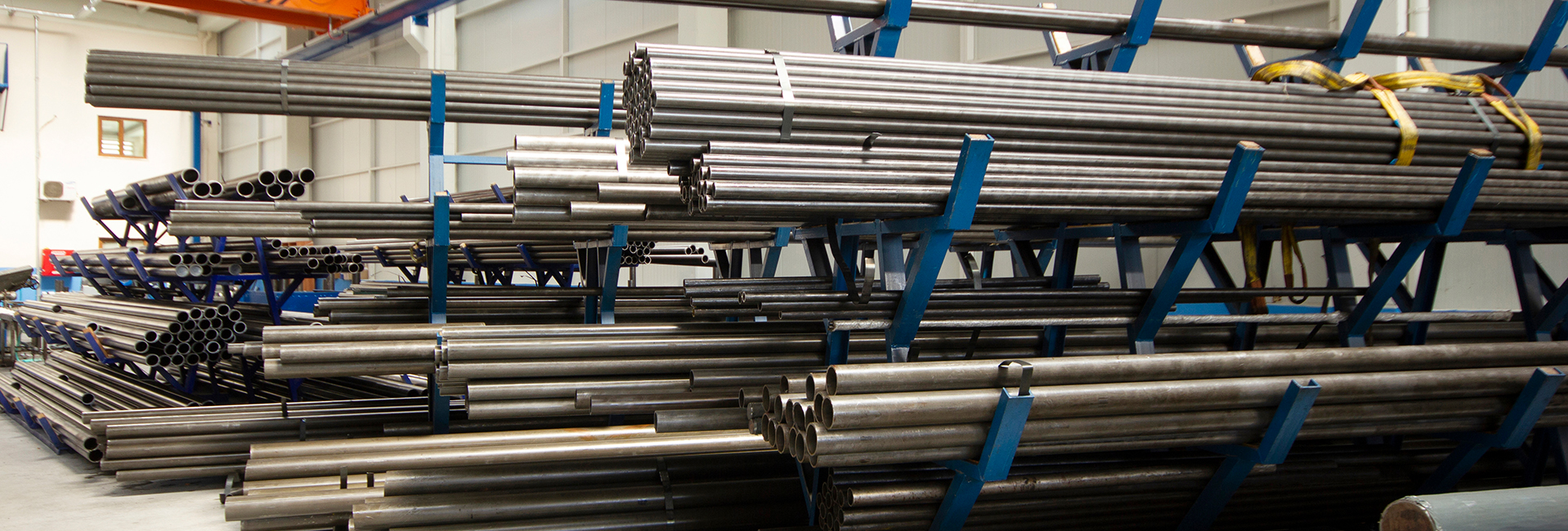We have often heard of TMT steel bars. They are extensively used in the construction industry for reinforcement purposes in structures like bridges, buildings, dams, and other infrastructural projects. ‘TMT’ expands into ‘Thermo-Mechanically Treated.’
|
Table of Content
|
Essentially, the TMT industry is dedicated to the manufacturing and production of steel reinforcement bars using a precise process of thermo-mechanical treatment. This process involves subjecting steel bars to a controlled heat treatment followed by rapid cooling in water. The TMT process results in ultra-high-strength steel with excellent mechanical properties such as increased steel material strength, ductility, and other performance characteristics, making the steel suitable for applications where structural integrity and load-bearing capacity are critical.
High-strength steel is of paramount importance for the success of the TMT industry. Using high-strength steel with properties such as superior tensile strength and durability in TMT manufacturing contributes to the creation of more resilient and cost-effective constructions. As these raw materials are characterised by a higher strength-to-weight ratio, they help create lighter yet robust structures, saving on overall material usage.
Furthermore, high-strength steel’s resistance to wear and corrosion ensures the longevity of TMT products, addressing key concerns in the construction industry and paving the way for sustainable and high-performance infrastructure projects.
Let us get to know more about high-strength steel and the ways in which it has revolutionised TMT manufacturing.
What is high-strength steel?
First things first, high-strength steel can be defined as a type of steel with enhanced mechanical properties, particularly increased strength, compared to conventional or mild steels. The increased stainless steel yield strength is attained through a combination of heat treatment processes, alloying elements, and precise control over the manufacturing process. High-strength steel has better tensile strength, yield strength, and hardness, making it well-suited for applications where structural performance, weight reduction, and durability are critical factors.
Advanced high-strength steel (AHSS) is another type of high-strength steel alloy which consists of advanced alloying elements and specialised manufacturing techniques to achieve even higher levels of strength, as well as improved formability and toughness.
Eight unique properties of high-strength steel
High-strength steel is characterised by several unique properties that differentiate it from traditional raw materials, such as mild steel.
Here are some of its most distinguishing characteristics:
- Greater strength: As the name suggests, high-strength steel exhibits significantly higher tensile strength and yield strength compared to traditional materials.
- Improved longevity: The advanced alloying elements and cutting-edge manufacturing processes used in producing high-strength steel result in heightened resistance to wear, fatigue, and impact. This increased longevity makes it well-suited for applications where materials are subjected to harsh conditions or repetitive stress.
- High tensile-to-yield strength ratio: High-strength steel often has a high ratio of tensile strength to yield strength. This gives it the ability to bear substantial deformation before failure. This property is crucial in applications where controlled deformation is necessary, providing a safety margin and preventing sudden failures.
- Designed for mass production: High-strength steel is a crucial raw material for several industries. The thrust is thus always to produce any variant of such steel on a mass scale. Therefore, adequate testing of different alloy combinations is undertaken and the most optimal high-strength steel alloy is selected for production.
- Decreased weight: The higher strength-to-weight ratio of high-strength steel ensures the production of lighter structures without compromising on strength.
- Formability and weldability: Another unique property of high-strength steel is the good formability it offers despite increased strength. This allows its production in complex shapes and configurations during manufacturing. Moreover, innovations in welding techniques have made high-strength steel increasingly weldable.
- Corrosion resistance: Certain types of high-strength steel are so alloyed as to exhibit corrosion-resistance properties. This makes them excellent raw materials for construction purposes in areas exposed to damage by water or salt.
- Customisable: Varieties of advanced high-strength steel are amenable to engineering with specific combinations of strength, ductility, corrosion resistance, and toughness to meet the precise requirements of different applications, offering a level of customisation not easily achievable with traditional materials.
These exceptional properties provide a major thrust to the establishment of high-strength steel as a versatile and high-performance material, with widespread applications.
The renewability of high-strength steel
One of the factors that is propelling high-strength steel usage forward across industries is its renewability. Steel is one of the most recycled raw materials globally, and the recyclability of high-strength steel is a key factor in assessing its environmental sustainability. The renewability of high-strength steel as well as advanced high-strength steel primarily depends on the recycling capabilities of steel as a material.
Here are some notes on the renewability of high-strength steel alloys:
- Recyclability of Steel: Steel is highly recyclable, and the recycling process does not compromise its inherent properties. Recycling involves melting down steel scrap and reusing it to produce new steel products. All kinds of high-strength steel possess these qualities.
- Circular economy principles: High-strength steel alloys can align with the principles of a circular economy, where materials are recycled and reused to minimise waste and resource depletion. Designing products with easy disassembly and recyclability in mind further enhances the recycling potential of this unique raw material.
- Life cycle assessment: Evaluating the renewability of high-strength steel alloys encompasses considerations of its entire life cycle, including raw material extraction, production, use, and end-of-life management. The recyclability of such alloys contributes positively to their general environmental performance, as it reduces the need for extracting new raw materials and lowers energy consumption compared to producing steel from iron ore.
- Closed-loop recycling: The closed-loop recycling process is particularly relevant to the renewability of high-strength steel alloys. This involves recycling steel from end-of-life products back into the same application. For example, recycled AHSS from old vehicles could be used to manufacture new automotive components.
- Energy efficiency in recycling: The energy required to recycle steel is significantly lower than that needed for primary steel production. Recycling steel contributes to energy conservation and reduces greenhouse gas emissions compared to producing steel from raw materials.
- End-of-Life considerations: Proper end-of-life management, including efficient collection and recycling processes, is crucial for maximising the renewability of high-strength steel. Establishing effective recycling infrastructure ensures that the raw material reaches recycling facilities instead of being disposed of in landfills.
- Industry initiatives: Ongoing efforts within the steel industry, including research, technological innovations, and collaborative initiatives, contribute to improving the sustainability and renewability of high-strength steels. These efforts aim to enhance recycling processes, reduce environmental impacts, and promote a more circular approach to steel usage.
Read more: What Are the Different Grades of TMT Bars?
Five biggest advantages offered by high-strength steel in the TMT industry
The excellent properties of high-strength steel make it the holy grail of several engineering industries, one of the most significant among which is the TMT industry.
In the TMT industry, the incorporation of high-strength steel in reinforcement bars enhances the performance and safety of concrete structures, making it a key player in modern construction practices. The high tensile strength and robustness of high-strength steel bars augment the load-bearing capacity of bridges, buildings, and other infrastructural projects. This makes such structures more durable and profitable in the long run.
Here are some of the most notable advantages offered by high-strength steel in the TMT industry:
- Strength and longevity: The strength of this type of steel makes it extremely durable and ideal for construction projects where structures will be required to endure extreme pressure or weather conditions. High-strength steel alloys are also designed to resist corrosion, making them last much longer than traditional raw materials.
- Mouldability: Since high-strength steel offers excellent mouldability, it can be used for creative and unique construction designs. It offers immense design flexibility to planners and architects.
- Cost-effective: While construction using high-strength steel may seem quite expensive at the time of building, its durability ensures lower maintenance and repair costs, making it more cost-effective than traditional raw materials in the long run.
- Reduced construction time: The lower weight of high-strength steel makes it easy to handle, allowing for speedy transportation and installation. Further, the flexibility in design offered by high-strength steel entails construction with fewer support columns and other materials. All these factors help in reducing the construction time of a project.
- Eco-friendly: As mentioned in the previous section, high-strength steel alloys are almost 100% recyclable, which means that they can be reused in other construction projects, if necessary. This ensures less wastage and makes high-strength steel a sustainable and eco-friendly option for construction projects.
High-strength steel alloys have been able to give an immense thrust to the TMT industry based on their unique advantages. The properties of this alloy are expected to get more and more refined with further research and innovation, rendering the possibilities of growth virtually limitless.
Also read: Which TMT Bar to buy for building your house
High-quality TMT bars by Sree Metaliks Limited
Sree Metaliks Limited is a TMT bar manufacturer in India that has recognised the strength and demand for durable, sustainable, and eco-friendly TMT rebars. Sree Metaliks Limited is one of the leading manufacturers of high-grade, top-quality, and cost-effective TMT rebars in the country. These high-strength steel bars are manufactured in compliance with international standards and under expert supervision. If you are looking for the highest quality and high-strength steel in the market, head straight to the website of Sree Metaliks Limited and contact them for quotes.
For more information, please reach out to us at: Sales@sreemetaliks.com

